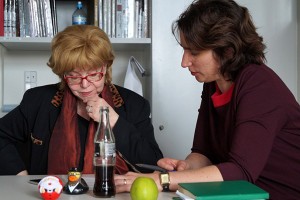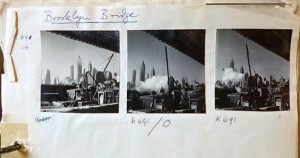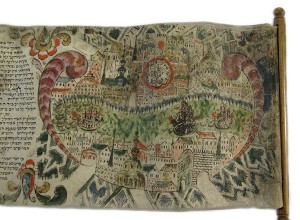An Interview with Cilly Kugelmann about the Exhibition “The Creation of the World: Illustrated Manuscripts from the Braginsky Collection”
Mirjam Wenzel: At the forthcoming exhibition, the Jewish Museum Berlin will present its first ever show of outstanding examples of the centuries-old Jewish scriptural tradition. What significance does scripture—the written word—have in the Jewish tradition?

Cilly Kugelmann and Mirjam Wenzel
© Jewish Museum Berlin, photo: Katrin Möller
Cilly Kugelmann: In early collections of rabbinic interpretations of biblical texts—the so-called midrashim—it is written that the Torah existed before the world was created. Some rabbis see the Torah quasi as a manual of creation that God drew on during his seven-day feat. Such interpretations demonstrate the extraordinary significance attributed to scripture in Judaism.
Following the loss of the geographic homeland Israel, sacrifices and pilgrimages to specific temples were abandoned in favor of prayer services that could take place anywhere—and the traditional texts themselves consequently became the most important, pivotal moment of the rite. To this day, the study and interpretation of biblical writings is the primary focus of Jewish intellectual life.
Why is René Braginsky’s Collection of illuminated manuscripts being presented under the title “The Creation of the World?” → continue reading
My Week of Intensive Research into Fred Stein’s Archives

Contact sheet Brooklyn Bridge
© Estate of Fred Stein, photo: Theresia Ziehe
In June of 2012 I had the opportunity to delve into the estate of Fred Stein. During the preparation for our then-upcoming exhibition “In an Instant,” I travelled to the little town of Stanfordville, NY to visit Peter Stein, the photographer’s son and archive administrator. For a week, I studied the voluminous and multi-faceted material stored in various rooms of the private residence. It was an unforgettable immersion into the life and work of Fred Stein.
Hundreds of negatives, kept in fireproof cabinets, make up the core of the collection. Their differing formats point to the two cameras Stein photographed with: coiled strips of Leica negatives and individually packaged 2 1/4 x 2 1/4 inches negatives in pergamin sheets from the Rolleiflex. The cameras themselves unfortunately didn’t survive. Among these negatives, you can see Stein’s first shots of Dresden shortly before he emigrated to Paris in 1933. → continue reading

Detail of a Megillah, Germany, 18th century
© Jewish Museum Berlin. Photo: Michaela Roßberg
Today, 16 March, Jewish communities are celebrating Purim. On this holiday, the biblical Book of Esther is read aloud in synagogue. In keeping with tradition, the story of Esther—who saves the Jewish people in the Persian Empire from destruction by Haman, the king’s highest-ranking official—is read not from a book but from a parchment scroll. Commenting on the (Hebrew) reading, noisy hoots and rattles are sounded. (Alternative customs are described in our blog text for last year’s Purim).
Numerous Esther scrolls are currently in the custody of the Jewish Museum. The 32 works on loan will be on display along with other historical manuscripts from 4 April 2014, in the special exhibition “The Creation of the World. Illustrated Manuscripts from the Braginsky Collection.” → continue reading


